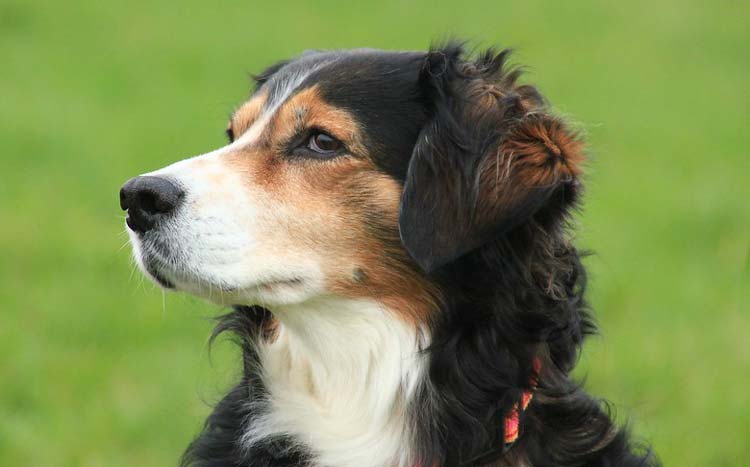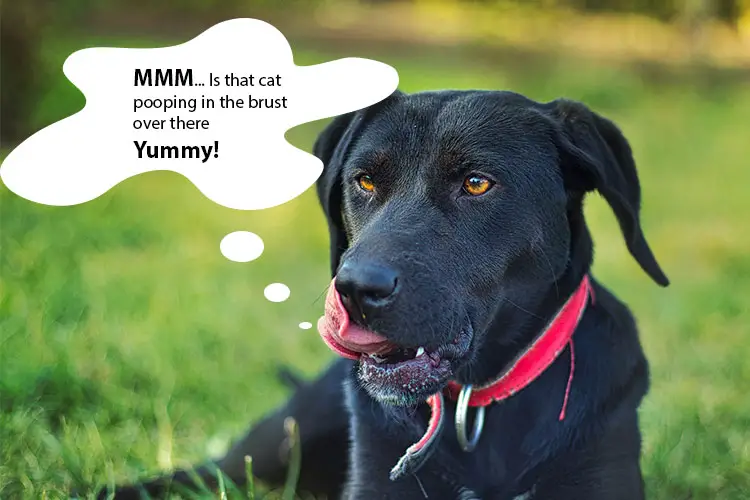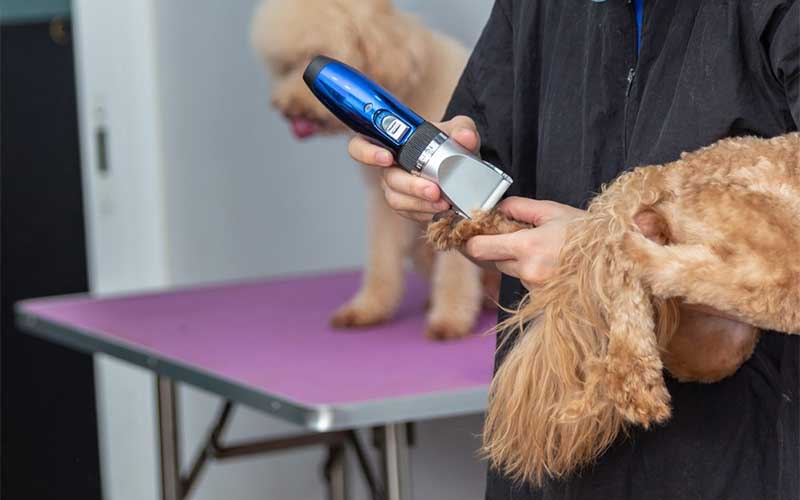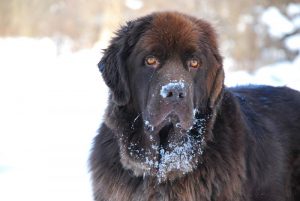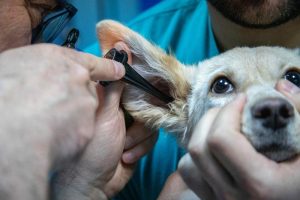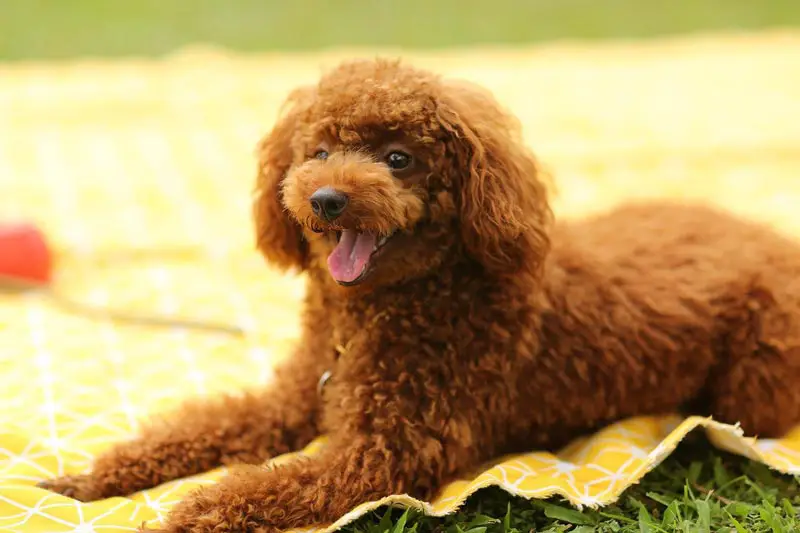
Poodles are among the most prized dog breeds in the world due to their curly and fluffy coat. With that said, proper care and nutrition should be given to them as early as puppyhood so that they’ll grow healthy and strong – and retain that fluffy coat!
So, what are the considerations when feeding a Standard Poodle puppy? How much should you feed them, and how often? Luckily, we have the answers in this article, as we give you tips and pointers on feeding your Standard Poodle pup.
When deciding on puppy food, there are many factors to consider, such as the age of the puppy, the type of food you will feed them, the proportions of each serving, and their taste buds. We will explore these factors in the later sections below.
See also:
Page Contents
How much to feed a Standard Poodle puppy?
A Standard Poodle puppy should be fed 4 to 5 servings of meals daily. You can slowly decrease the number of servings to 3 if they got past 6 months of age. The reason why your Standard Poodle pup will need more servings is due to their small stomach.
When it comes to servings, a Standard Poodle puppy works best with 2 cups of food a day. Of course, the above-mentioned metrics are not standard for all Standard Poodle puppies! Various factors can change the feeding amount and schedule, such as underlying health issues, type of food, weight, age, and others.
Feeding Chart
When feeding your Standard Poodle puppy, you have to consult a feeding chart to help you out. In this way, you know that you are feeding your pup the right amount of food and nutrition.
Here is a nifty chart that displays the weight and age of Standard Poodle puppies and their recommended kcal requirement, translated into the number of cups per day:
| Age in months | Weight in pounds | Required kcal per day | food per day (in cups) |
|---|---|---|---|
| 2 | 2 | 552 | 1 1/4 to 1 1/2 |
| 4 | 25 | 866 | 1 7/8 to 2 1/3 |
| 12 | 55 | 1,253 | 2 2/3 to 3 1/2 |
This feeding chart will depend on the following factors:
1. What brand of food do you have?
Different dog food brands have different ingredients and compositions so you’ll have to do a quick research. If you have little idea about the various dog food brands, you can search online for buying guides or ask your vet and/or breeder for more information. You can even ask your fellow pet owners about it.
In most cases, puppy foods in the market will have an age bracket. Some formulas are meant for younger puppies that have just finished the weaning process while other formulations are strictly aimed at bigger puppies that are near adulthood.
2. How many calories does the puppy food have?
Check the label of the food brand that you have. Some brands have a little bit more calories when compared with other brands of the same age bracket. It will also depend on the ingredients of the puppy food, such as the amount of protein, fats, carbohydrates, and the like.
Oftentimes, store-bought or typical grocery puppy food has a different amount of calories when compared to pricier, organic puppy food. The calories are usually measured in kcal and can be seen on the label of your puppy food of choice.
3. Is your puppy very active?
The Standard Poodle puppy’s activity levels are also crucial in determining just how much food you need to give them daily. A less active pup means that you don’t have to feed them that much to avoid them getting obese.
On the other hand, if your Standard Poodle pup often plays and runs around, whether indoors or outdoors, they will need more energy and calories to burn. Therefore, if that’s the case, choose higher-calorie puppy foods for them, or supplement them with raw feeding or home-cooked meals.
4. Is your puppy still being nursed?
Sometimes, a Standard Poodle puppy that’s still being nursed will not eat that much yet since they haven’t finished the weaning process. If your pup is still taking that portion mix of water and wet food, they might need to be fed only a little bit as compared to bigger and older puppies.
Growth Chart
To keep you in check if your Standard Poodle puppy is underweight or overweight, a growth chart will help you out.
Are you having difficulty finding a good Spoo (Standard Poodle) chart out there on the internet? You’re in luck – the following charts below will tell you the recommended weight for your Standard Poodle pup based on their age.
| Age in Months | Weight in Kilogram | Weight in Pounds |
|---|---|---|
| 1 month | 2.3-2.7 | 5-6 |
| 2 months | 6.3-6.8 | 14-15 |
| 3 months | 11-12 | 24-26 |
| 4 months | 15-16 | 34-36 |
| 5 months | 18-21 | 41-46 |
| 6 months | 21-24 | 46-54 |
| 8 months | 25-28 | 55-62 |
| 10 months | 26-30 | 58-67 |
| 12 months | 27-31 | 59-69 |
| 24 months | 27-32 | 60-70 |
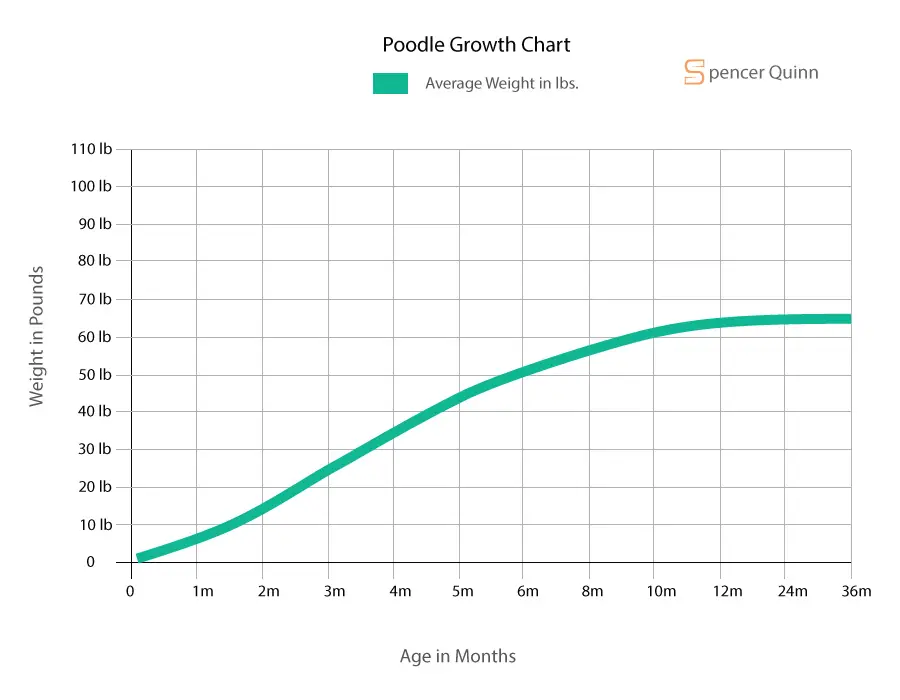
Furthermore, here’s a chart that shows their typical height in inches based on their age:
| Age of puppy | Min. height | Max. height |
|---|---|---|
| Below 4 weeks | - | 10 |
| 4 to 8 weeks | 10 | 13 |
| 2 to 4 months | 13 | 19 |
| 4 to 8 months | 19 | 23 |
| 8 to 12 months | 23 | 27 |
| 12 to 24 months | 24 | 27 |
If you want further information, here are details for their developmental milestones so you can know what to expect for each stage (feeding adjustments included):
Birth to 2 weeks old
A Standard Poodle puppy during this stage can only smell food and whatnot. They also have the basic sense of touch but they can’t see or hear yet.
3 weeks old
Your Standard Poodle pup should be able to see and hear properly during this period. They may also learn how to walk for the first time so be sure to place their food or drink bowl within short distances.
4 to 12 weeks old
The weaning process for Standard Poodle puppies begins at this period and typically ends when they reach 8 weeks old. However, not all puppies are the same and it depends on various factors. Don’t feel bad if your puppies haven’t been fully weaned yet!
As with all puppies, your Standard Poodle pup should be dewormed and vaccinated during this period. After the weaning process has finished, they can be separated from their mother and sent off to a new home. Socialization is, therefore, crucial in this period to avoid behavioral problems.
3 to 4 months old
Your Standard Poodle puppy will need to be disciplined properly during this period. They might need obedience training and they also need a proper schedule for feeding to avoid obesity and begging behaviors.
4 to 6 months old
Your Standard Poodle puppy can continue their obedience training. It’s also important that your pup gets enough outside world contact so they won’t feel alienated and scared by guests and strangers.
6 to 12 months old
A Standard Poodle puppy, at this point, can be taken to the vet for spaying/neutering. Keep in mind, though, that this might also result in the puppy eating much more than they did before. Ready some stock food!
12 to 24 months old
Your Standard Poodle puppy will sleep less and by this time, they will reach full maturity (adulthood). They might not play around as much when compared to their puppy days.
Recommended Food
Are you having trouble with choosing the right food for your Spoo pup? Here’s a rough guide on what you should feed your Standard Poodle puppy:
1. Choose puppy food without additives or fillers
A Standard Poodle puppy will benefit more from a puppy food that has no fillers or additives. We recommend getting organic puppy food instead of commercial brands because they have more meat and veggie content rather than just fillers.
2. Consider oatmeal or quinoa
Assuming your vet didn’t advise your puppy to go on a no-grain diet; healthy grains could be beneficial for your Poodle pup to boost their energy.
3. Foods rich in glucosamine and chondroitin
You will find these in fishes like animal bones and seafood. Glucosamine and chondroitin can help a Standard Poodle puppy with a genetic history of dysplasia and/or joint problems.
4. First-ingredient meat
Among the most common meat choices for puppies include chicken, beef, turkey, and even salmon and whitefish. Look for these as the first ingredient of your Standard Poodle puppy food.
5. Don’t leave behind veggies and fruits
All puppies nowadays are omnivores and you can feed them a few vegetables and fruit to add nutrition to their immune system and whatnot. In the wild, after all, they tend to eat a bit of grass.
6. Mix kibble and wet food
If your Standard Poodle puppy is a troublesome picky eater, don’t just put wet food on their plate – mix it with kibble for best results. They get tasty food and strong teeth as a result.
Foods to Avoid
So, what should not go into the Standard Poodle puppy’s diet plan list? Here are the foods to avoid for them:
1. Foods with too much MSG
MSG or monosodium glutamate can cause urinary tract infection both in humans and in pets. Limit your Standard Poodle puppy’s intake of MSG-driven foods.
2. Puppy foods with artificial colors and preservatives
Look for BHA, BHT, PG, and colors like Yellow #5 and the like. These are considered artificial colors and preservatives that aren’t healthy for your Standard Poodle puppy.
3. Too many questionable animal by-products
Animal by-products aren’t advisable because you don’t know where they came from – some of them might even be from sick or dead animals! If you want or need to feed your puppy with organs, it’s best to get a direct supply from your local fresh market instead of inside commercial puppy food brands.
4. Excessive wheat and/or gluten
Does your Standard Poodle puppy have a history of gluten allergy? If your vet advised against wheat and grains, you can safely take it out of your puppy’s diet. Fortunately, there are many alternatives to wheat that can be a source of carbohydrates, such as quinoa and oatmeal (mentioned above).
FAQs on Feeding a Standard Poodle Puppy
Do you have any questions regarding feeding a Standard Poodle puppy? We will try our best to answer the most common ones below:
Help! My Standard Poodle is still hungry! What should I do?
Whatever you do, don’t go overboard with food even if they are begging excessively. Begging behaviors are sometimes caused by infrequent feeding or too much free time on their hands. Perhaps you can try to increase the feedings per day?
A Standard Poodle puppy is very likely to get obese compared to other breeds so always restrict their diet in the right way. Obesity in Poodles also comes with all sorts of health issues, such as joint dysplasia, heart problems, sore backs, and tummy aches.
You can try using a slow feeder (discussed below) or a puzzle feeder to help your Standard Poodle puppy slow down in terms of feeding. Aside from that, you can also increase the number of activities during their idle hours so they won’t be driven to eat food out of boredom.
Likewise, you can also ask your veterinarian for an expert opinion. They might give your Standard Poodle puppy a recommended diet plan to avoid overeating and excessive begging habits.
What should I do if my Standard Poodle puppy isn’t eating?
Any puppy not eating for a while is usually okay as it might just be stressed or full. But there are also times when not eating for a long time will make you panic. Here are the most common reasons why your Standard Poodle puppy loses appetite:
1. They just moved in
Anxiety can cause any puppy to not feel well, which will result in loss of appetite. If you think about it, bad breakups and troubles with friends, family, and finances also make you not want to eat sometimes, right? That’s the case for a Standard Poodle puppy that just moved into a new home.
If that’s the case, your Standard Poodle pup needs to have some solo time when being fed as they are getting adjusted to their new environment. Don’t make them feel scared and keep them in a safe place when feeding them.
2. They have a toothache
Dental issues are also a factor that could make your Standard Poodle puppy lose their appetite. Get your puppy to a vet if you suspect that they have abnormally bad breath as that could be a sign of teeth problems.
3. They have a bad stomach
Perhaps your Standard Poodle puppy ate something bad? Talk to your vet right away if you suspect that your pup has some sort of digestive issue, which can usually be examined through their stools.
To avoid your puppy getting a bad stomachache, you should be careful when feeding them new food. Always prepare new food brands in small proportions first before feeding them a lot so that their stomach won’t get shocked by the change.
4. They might not like the food
A Standard Poodle puppy can be a picky eater, much like all other Poodle types. If your pup doesn’t like the food, why not whip up a new recipe? Most pet owners like to mix part dry and part wet food, as well as some home-cooked meals and raw meats in the dish. This might attract your puppy to eat.
Raw feeding a Standard Poodle puppy
BARF or Biologically Appropriate Raw Feeding (sometimes called “Bones and Raw Feeding”) is also an option for your Standard Poodle puppy. However, keep in mind that raw feeding should be done properly to avoid bacterial contamination in meat.
Raw feeding should also be consulted with your vet or breeder to make sure that your pup isn’t lacking any major nutritional value. Most pet owners who start out feeding raw only tend to focus on the meat side, leaving behind certain vegetables and whatnot.
Always make sure that your Standard Poodle pup gets balanced nutrition and research first on raw feeding before you begin. When done right, raw feeding you’re your Spoo can be nutritional and beneficial in the long run.
Slow-feeding a Standard Poodle puppy
As mentioned above, a Standard Poodle puppy has a high risk for obesity due to quickly eating. In this case, a slow feeder can work well. Slow feeder bowls are available in the market and your local pet store – their job is to make your puppy work harder to get their food rather than gobbling it all at once.
Aside from that, a puzzle feeder for your Standard Poodle pup works similarly but also adds a fun factor to their food. They’re not just slowly gobbling down kibble – they’re also playing with a toy!
